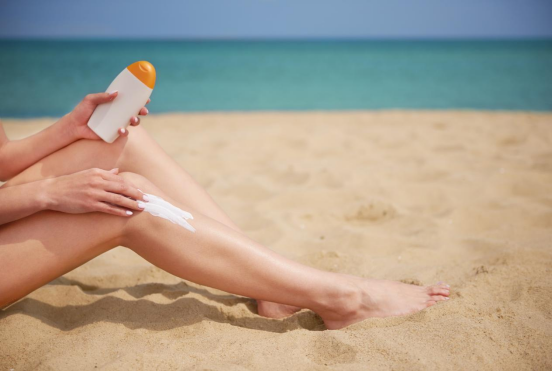
As customers become significantly savvy about skin care, the discussion between chemical and physical sunscreens remains to be a warm subject. While both deal essential protection against the sunlight's harmful ultraviolet (UV) rays, physical sunscreens are commonly admired for their gentle yet efficient formulation, making them a preferred selection for those with sensitive or reactive skin. The key to their success hinges on their energetic ingredients, which produce a physical obstacle on the skin to block out UV radiation. This write-up will certainly explore the globe of physical sun blocks, focusing on their key ingredients: zinc oxide and titanium dioxide.
Unlike their chemical equivalents, which soak up UV radiation and transform it into heat, physical sunscreens work by sitting on top of the skin to form a guard that disperses and scatters both UVA and UVB rays. This mechanism is why they are typically described as "sunscreens." The main benefit of this approach is its prompt efficiency upon application and the lower probability of causing skin irritability, as the active ingredients are not taken in into the skin.
One of the most celebrated active ingredient in the physical sun block family is Zinc Oxide. This powerhouse mineral is unique in its capacity to provide broad-spectrum security, meaning it successfully guards the skin against the full spectrum of UVA and UVB rays. UVA rays are in charge of early aging, consisting of creases and great lines, while UVB rays are the primary source of sunburn. By providing thorough protection against both, zinc oxide plays a critical role in avoiding sun damage and minimizing the threat of skin cancer.
Additionally, zinc oxide is renowned for its calming properties. It has been used for centuries to treat minor skin irritations, rashes, and burns, a testimony to its mild nature. This makes sun blocks created with zinc oxide an ideal selection for individuals with sensitive skin, acne-prone skin, or problems like rosacea and dermatitis. Its non-comedogenic properties also mean it is less most likely to block pores, an usual problem for those with oily or mix skin.
The various other principal in physical sunscreen ingredients the physical sunscreen classification is Titanium Dioxide. This naturally occurring mineral is an additional exceptional ingredient for creating a physical obstacle against UV rays. It is highly effective at mirroring and spreading UVB radiation, supplying robust protection versus sunburn. While it provides excellent security across the UVB spectrum, it is generally taken into consideration much less reliable against long-wave UVA rays contrasted to zinc oxide.
Therefore, titanium dioxide is frequently made use of combined with zinc oxide in sunscreen solutions. This mix creates a collaborating effect, enhancing the overall broad-spectrum defense of the product. By leveraging the toughness of both ingredients, formulators can produce a sun block that provides thorough and reputable protection against the sunlight's damaging rays. Like zinc oxide, titanium dioxide is likewise mild on the skin and is an ideal option for those with delicate or conveniently irritated skin.
In recent times, improvements in solution technology have resolved among the initial drawbacks of physical sunscreens: the thick, white cast they would commonly leave on the skin. Modern solutions currently make use of pulverized or nano-sized fragments of zinc oxide and titanium dioxide, which allows for a more cosmetically stylish application without compromising their protective capabilities. This means you can delight in the gentle, efficient protection of a physical sunscreen without the telltale white deposit.
Finally, physical sunscreens offer a reputable and gentle means to shield your skin from the sunlight. Their star components, zinc oxide and titanium dioxide, work in consistency to develop a physical guard that deflects damaging UVA and UVB rays. With their outstanding safety account and viability for all skin types, specifically delicate skin, physical sunscreens are a formidable force in the battle against sunlight damage. The next time you are Surf the sunscreen aisle, consider the effective, protective, and skin-loving advantages of a physical formula.